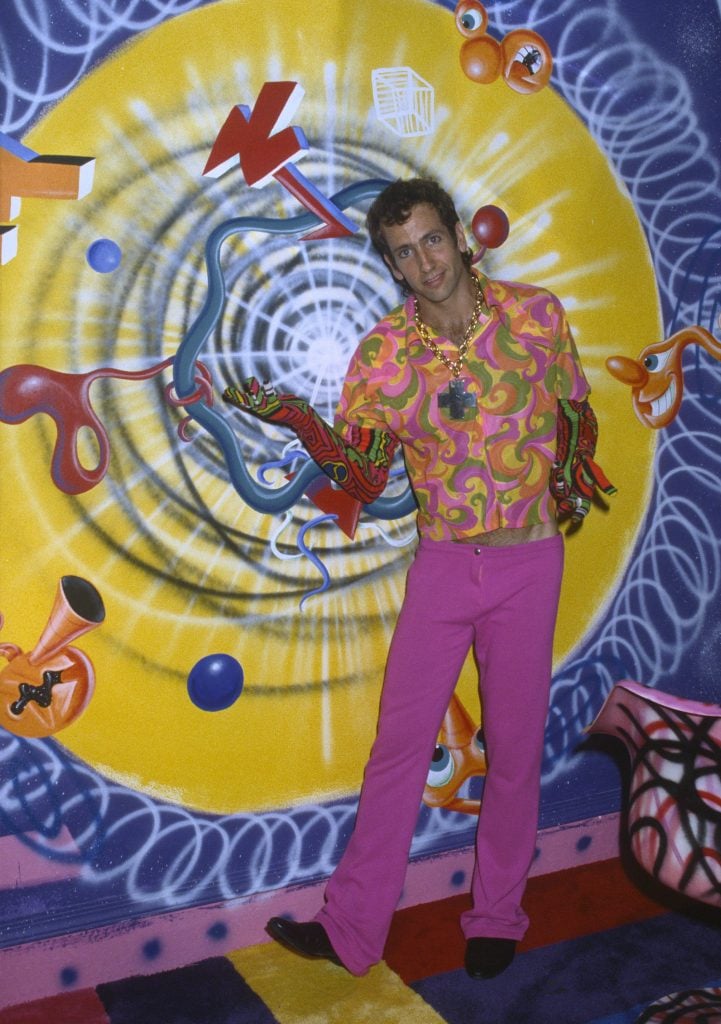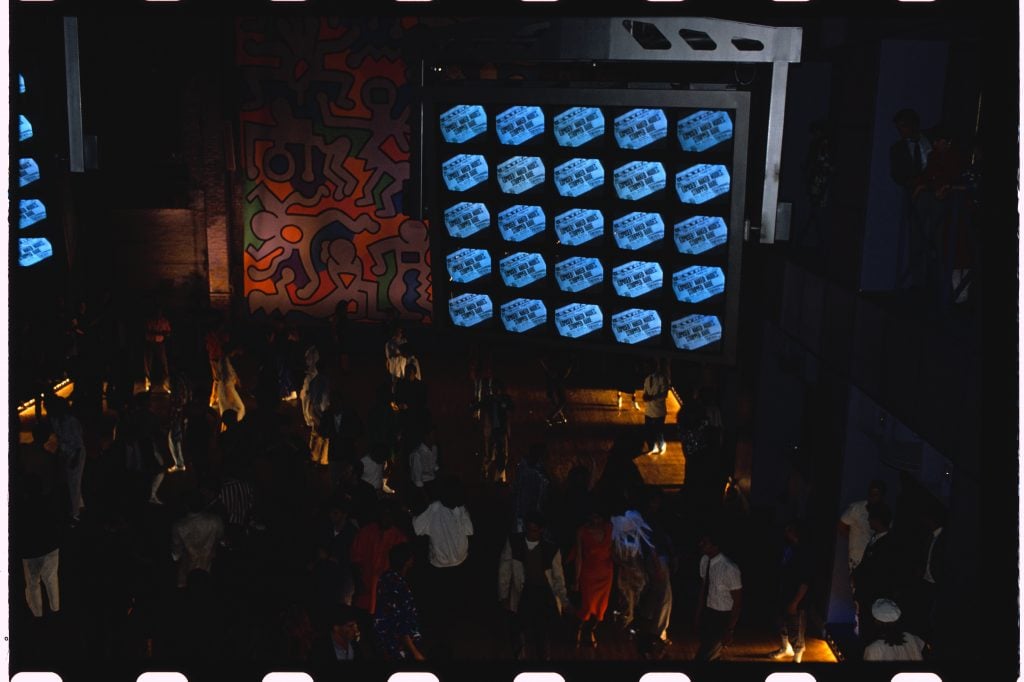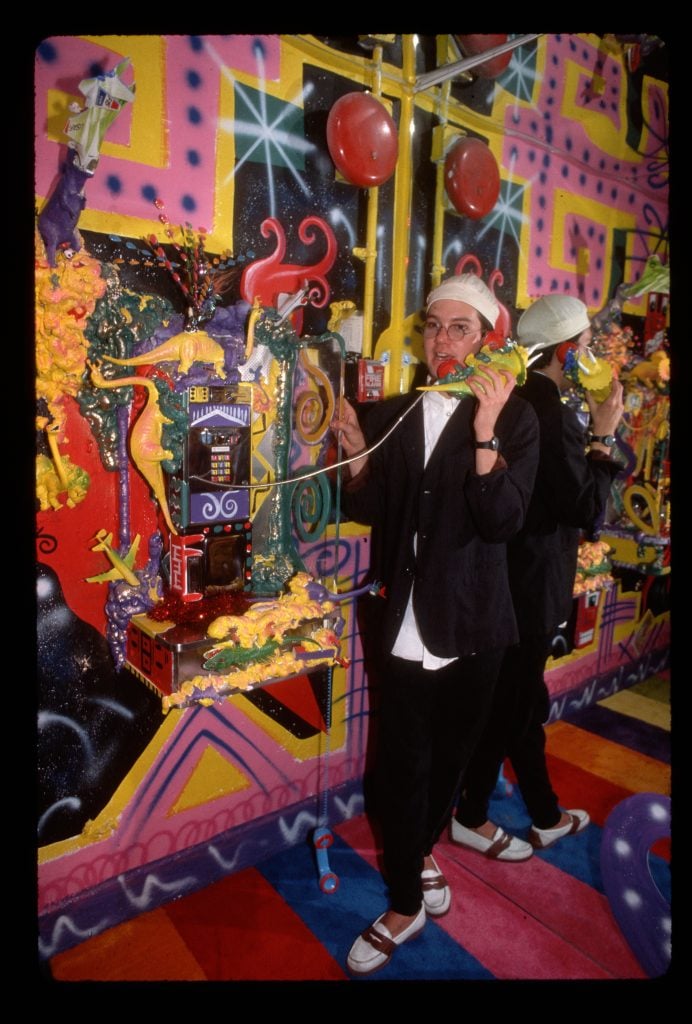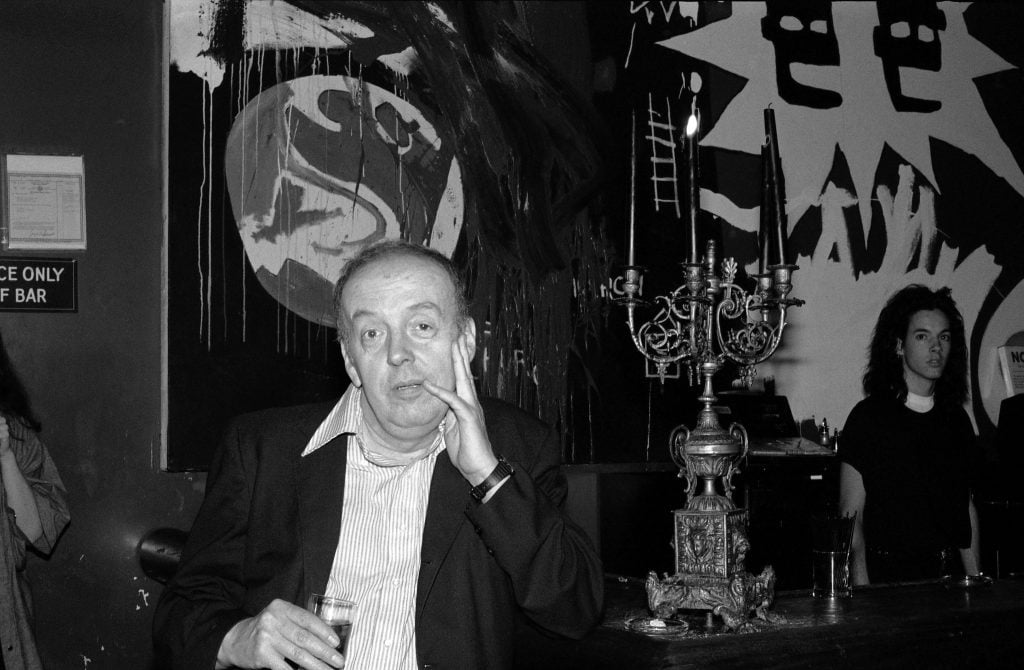Art World
Art Bites: The Lost Masterpieces of New York’s Palladium Nightclub
The space was as much a nightclub as it was an art gallery.

What’s the deal with Leonardo’s harpsichord-viola? Why were Impressionists obsessed with the color purple? Art Bites brings you a surprising fact, lesser-known anecdote, or curious event from art history. These delightful nuggets shed light on the lives of famed artists and decode their practices, while adding new layers of intrigue to celebrated masterpieces.
Today, the Palladium building on East 14th Street in Lower Manhattan is used as a dormitory, athletic facility, and dining hall by nearby New York University. From 1985 until 1997, however, it was one of the Big Apple’s most successful nightclubs. Its interior, now filled with locker rooms and exercise equipment, once displayed the work of renowned artists like Keith Haring, Jean-Michel Basquiat, Kenny Scharf, and Francesco Clemente, all of whom were among the venue’s star-studded list of regulars.
Designed by architect Thomas W. Lamb, the Palladium building first opened its doors in 1927. It was originally named the Academy of Music, after a school located across the street, and spent the majority of its existence as a movie theater and music hall.
Renamed the Palladium in September 1976, it eventually passed into the hands of entrepreneurs Steve Rubell and Ian Schrager, who approached Japanese architect Arata Isozaki to repurpose the cavernous space into a modern discotheque.

Dancers beneath a Keith Haring mural at the Palladium nightclub. Photo: Nick Elgar/Corbis/VCG via Getty Images.
The Palladium was much a club as it was an art gallery. Guests partying on the building’s main hall did so against the backdrop of a 32-foot-tall mural painted by Haring. Haring, who emerged from New York’s graffiti subculture, filled the mural with his trademark stick figures, creating a chaotic and colorful design that resembled the crowded dance floor down below.
The club’s VIP room and bar was adorned with yet another massive panel, this one by Basquiat featuring the artist’s equally iconic neo-expressionist compositions.

A guest using pay phone in the Kenny Scharf room at the Palladium nightclub in New York City, circa 1985. Photo by LGI Stock/Corbis/VCG via Getty Images.
An entire room was installed with Scharf’s brightly colored furnishings and radiant murals, which depicted otherworldly landscapes dotted with his signature alien characters. Streaks of spray paint covered every surface. To Scharf, the Palladium represented a space where “artists would go, not only to have fun, but to meet each other,” he told W Magazine. “There were artists making things and showing things in these spaces.”

Taylor Mead in front of a mural by Jean-Michel Basquiat in the Michael Todd Room at the Palladium nightclub, 1987. Photo: Catherine McGann/Getty Images.
Sadly, these and other priceless artworks were sadly taken down when, following its acquisition in 1997, the Palladium was demolished to make way for the NYU dorm that occupies its place today.
A replica of Basquiat’s mural was briefly displayed as part of a 2022 exhibition at New York’s Starrett-Lehigh Building. Created by National Museum of African-American History and Culture designer David Adjaye, the show revisited what the Palladium meant to Basquiat and the city as a whole. An underground haven for visionary troublemakers and marginalized groups alike, the club was the cornerstone of a vibrant counterculture that dissipated as a result of Manhattan’s rapid gentrification.





